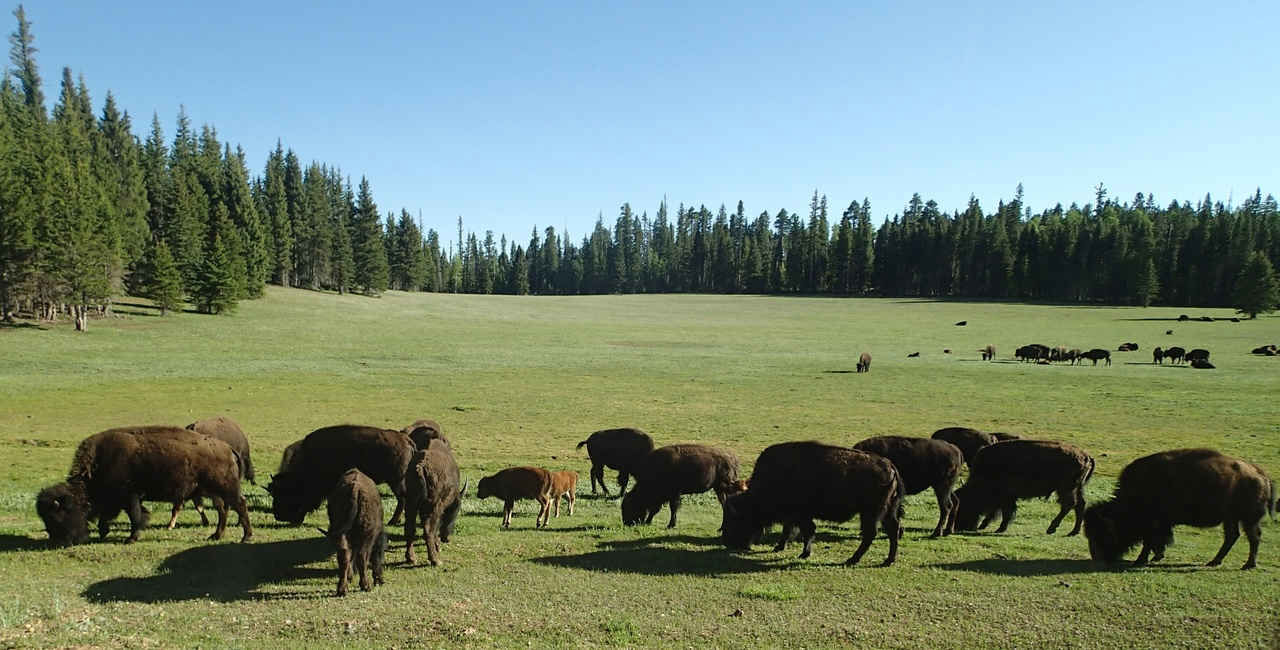
Bison Behavior
Wallowing is a common behavior of bison. A bison wallow is a shallow depression in the soil, either wet or dry. Bison roll in these depressions, covering themselves with mud or dust. Possible explanations suggested for wallowing behavior include grooming behavior associated with molting, male-male interaction (typically rutting behavior), social behavior for group cohesion, play behavior, relief from skin irritation due to biting insects, reduction of ectoparasite load (ticks and lice), and thermoregulation.
In the process of wallowing, bison may become infected by the fatal disease anthrax, which may occur naturally in the soil. The bison's temperament is often unpredictable. They usually appear peaceful, unconcerned, even lazy, yet they may attack anything, often without warning or apparent reason. They can move at speeds of up to 35 mph (56 km/h) and cover long distances at a lumbering gallop.
Their most obvious weapons are the horns born by both males and females, but their massive heads can be used as battering rams, effectively using the momentum produced by 2,000 pounds (900 kg) moving at 30 mph (50 km/h). The hind legs can also be used to kill or maim with devastating effect.
At the time bison ran wild, they were rated second only to the Alaska brown bear as a potential killer, more dangerous than the grizzly bear. In the words of early naturalists, they were a dangerous, savage animal that feared no other animal and in prime condition could best any foe(except for wolves and brown bears).
The rutting, or mating, season lasts from June through September, with peak activity in July and August. At this time, the older bulls rejoin the herd, and fights often take place between bulls. The herd exhibits much restlessness during breeding season. The animals are belligerent, unpredictable and most dangerous.